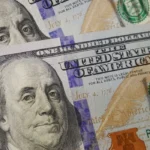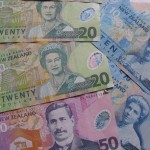Gold rose on Monday to the highest in nearly four weeks as worries over a slowing global economy spurred safe-haven demand for the precious metal. Platinum and palladium posted minor daily losses, while silver gained. Copper was mostly unchanged.
Comex gold for settlement in December rose by 0.59% to $1 228.9 per troy ounce by 13:54 GMT, having earlier touched $1 238.0 an ounce, the highest since September 17th. The precious metal fell on Friday but nevertheless closed the week 2.4% higher at $1 221.7 an ounce.
Gold’s rise was prompted by renewed fears of a global economy slowdown which pressured down equities measured by the MSCI All-Country World Index and induced safe-haven demand. Gold is often seen as an alternative investment to riskier assets such as equities.
Fed minutes from the central bank’s September 16-17 meeting revealed last week that policy makers feared slowing global growth and a strong dollar posed risks to the US economy’s recovery. Central bankers decided to maintain a pledge to keep interest rates at rock bottom for a “considerable time”.
Federal Reserve Vice Chairman Stanley Fischer said on October 11th that weaker-than-expected global growth could force the Fed to remove accommodation slower than otherwise. He said that the central bank won’t raise interest rates until the US economic growth has advanced sufficiently and emerging markets could digest the interest rate hike. An extended period of rock-bottom interest rates would benefit gold as a non-interest-bearing asset, while pushing the dollar down.
The US dollar index, which measures the greenback’s performance against a basket of six major counterparts, ended a 12-week bull run on Friday. The December contract settled 0.44% higher on Friday at 86.031, but closed the week 0.9% lower. It fell 0.47% to 85.625 by 13:58 GMT on Monday.
According to data by the US Commodity Futures Trading Commission, money managers trimmed net-long bullion positions in futures and options for the eight consecutive week in the seven days through October 7th.
Meanwhile, assets in the SPDR Gold Trust, the biggest bullion-backed ETF and a major gauge of investor sentiment towards the metal, fell on Friday to 759.44 tons, the lowest level since December 2008. The fund hasn’t seen an inflow since September 10th.
Elsewhere on the precious metals market, platinum for delivery in January fell by 0.24% to $1 258.6 an ounce by 13:54 GMT, while palladium December futures lost 0.29% to trade at $782.80. Silver for delivery in December was up 0.30% at $17.355 per troy ounce.
Copper
Copper extended last weeks advance on Monday, buoyed by a weaker dollar and after better-than-expected trade data from China sparked hope for better demand by the worlds top consumer.
Comex copper for delivery in December was up 0.02% at 13:42 GMT at $3.0355 per pound, having shifted in a daily range of $3.0470 and $3.0210. The industrial metal added almost 0.2% on Friday and settled the week 1.2% higher at $3.0350.
Data by China’s customs administration showed the Asian nation’s exports rose in September at the fastest pace since February 2013, buoyed by imports for processing and re-exports of goods such as the iPhone 6. Analysts had projected an annualized export growth of 11.8%, compared to the preceding month’s 9.4% jump.
Imports rose by 7.0%, the most since February, defying projections for a 2.7% contraction and compared to a 2.4% decline a month earlier. Inbound shipments of copper ore and concentrate rose by 34.4% to a record 1.29 million tons in September as the top producer of refined metal boosted capacity. However, the extremely high imports of copper concentrate will also mean higher refined production, a negative factor for future prices.
The country’s trade surplus narrowed to $31 billion from last month’s $49.83 billion, exceeding expectations for a drop to $41 billion.
Daniel Morgan, an analyst at UBS in Sydney, said for CNBC: “Its not an outrageously bullish print, but it might go some way to rebase sentiment towards global economic growth which had been getting very bearish … I would read this as mostly positive.”





